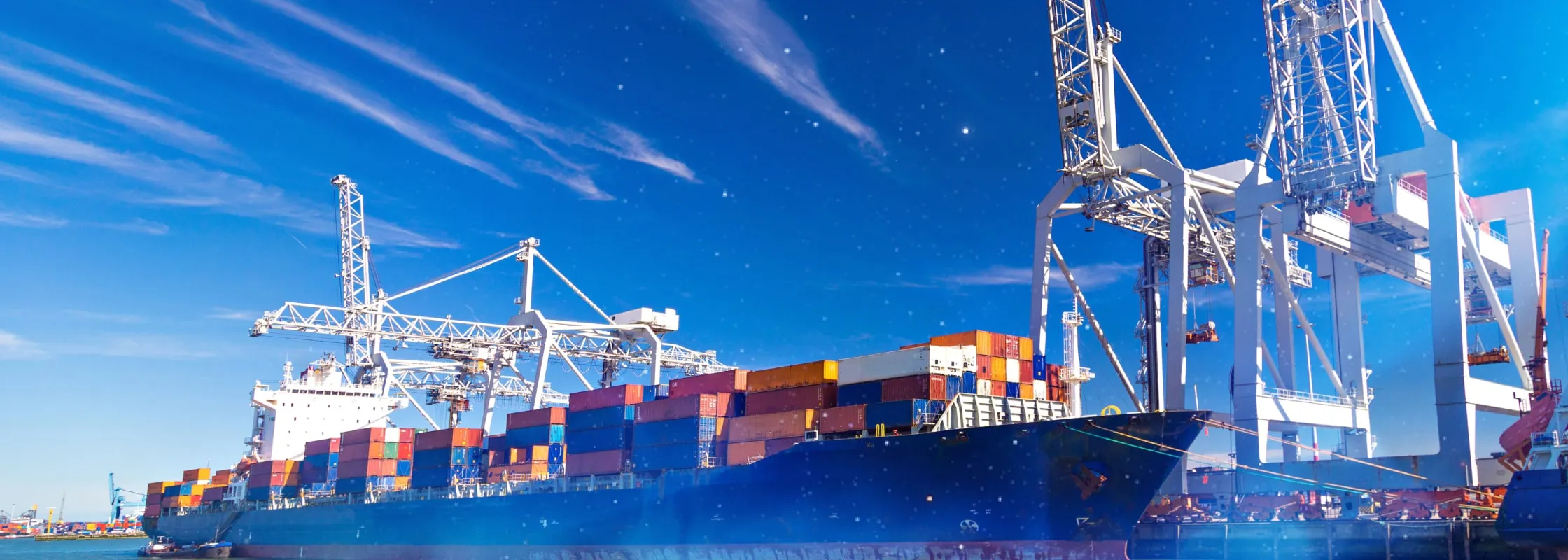Transport planning and execution stand as the backbone of modern supply chain management, diligently ensuring the seamless flow of goods within the complex web of logistics. In this intricate dance of products, SAP Transportation Management (SAP TM) takes center stage, orchestrating the movements with precision and automation to unlock enhanced productivity and cost savings.
Transport Planning and Execution with SAP TM
Transport planning and execution stand as the backbone of modern supply chain management, diligently ensuring the seamless flow of goods within the complex web of logistics. In this intricate dance of products, SAP Transportation Management (SAP TM) takes center stage, orchestrating the movements with precision and automation to unlock enhanced productivity and cost savings. It's here that LeverX, with its extensive experience in SAP TM, steps in to share its insights and expertise, helping businesses unleash the full potential of their logistics operations.
In the following sections, we will embark on a journey through the essential components of transport planning and execution. We'll navigate the various transport strategies available, delve into the world of Transportation Management Systems (TMS), explore the distinct role of SAP TM, understand its advantages, and even glimpse into the tangible successes that real-world businesses have achieved through its implementation.
What is Transport Planning?
At the heart of any efficient logistics operation lies transport planning – the careful craft of determining the most efficient and cost-effective route for goods to travel from their point of origin to their final destination. It's a comprehensive strategy that weaves together various threads, including the choice of transportation mode, the selection of carriers, route optimization, and precise scheduling. In this intricate ballet, the ultimate goal is crystal clear: ensure on-time deliveries, minimize transportation costs, and optimize the use of resources.
Choosing the Right Path: Comparing Transport Strategies
Transport strategies represent the diverse approaches and methods for the movement of goods. Picture it as a menu from which logistics professionals select the most suitable dish for their specific needs:
- LTL (Less-Than-Truckload): This strategy cleverly combines multiple shipments from various customers into a single truckload. It's a cost-effective option, particularly catering to smaller shipments.
- FTL (Full-Truckload): Here, a whole truck is dedicated to transporting a single shipment, making it the preferred choice for larger shipments. With the entire truck's capacity filled, it ensures faster transit times and minimizes handling.
- FCL (Full Container Load): In maritime transportation, FCL reigns supreme. The entire container is reserved for a single shipper, rendering it the ideal method for bulk cargo or substantial shipments.
- LCL (Less-Than-Container Load): The contrasting companion to FCL, LCL involves multiple shippers sharing the container's space and cost. It's a more budget-friendly option, especially for smaller shipments.
The comparison table below illustrates the key differences that help businesses make informed choices when planning their logistics operations.
|
Transport Strategy |
Use Case |
Advantages |
Disadvantages |
|
LTL |
Smaller shipments |
Cost-effective for small loads |
Longer transit times |
|
FTL |
Large, dedicated shipments |
Faster transit times |
Costly for smaller loads |
|
FCL |
Maritime bulk cargo |
Efficient for bulk cargo |
Expensive for smaller shipments |
|
LCL |
Shared maritime container space |
Cost-effective for smaller loads |
Longer transit times |
Navigating the Supply Chain: Understanding TMS and TPS
Navigating the intricate world of supply chain management, we've uncovered the pivotal role of transport planning and the diverse strategies that guide the efficient flow of goods. Now, let's venture further into the technological heart of these operations to understand the crucial underpinnings that drive this logistical symphony: Transportation Management Systems (TMS) and Transportation Planning Systems (TPS).
A technological backbone: TMS and TPS
- TMS serves as the backbone of efficient logistics and supply chain management, infusing precision into implementing transport planning strategies. It's a powerhouse of functionalities spanning route optimization, carrier selection, and meticulous shipment scheduling. These functions ensure that goods journey seamlessly from point A to point B in accordance with the well-crafted strategies we've explored.
- TPS, on the other hand, is a focused component of a TMS that specializes in the intricacies of planning transportation operations. It engineers optimal routes, selects the most suitable carriers, and meticulously schedules shipments. The role of a TPS is to ensure that transport planning unfolds seamlessly, aligning perfectly with broader logistical strategies.
In essence, TMS and TPS solutions serve as the digital conductors of your supply chain orchestra, ensuring that the strategies we've discussed are not just well-formulated but also expertly executed. They act as the technological engines that drive your logistics operations toward greater efficiency and cost-effectiveness.
Streamlining Logistics: 8 Vital Tasks of a TMS
A TMS, whether it's a standalone system or a part of a broader supply chain management solution, performs a range of crucial tasks, including:
- Route optimization: Determines the most efficient transportation routes, considering distance, traffic, and delivery windows.
- Carrier selection: Helps you choose suitable carriers based on performance, cost, and capacity.
- Shipment scheduling: Creates schedules for shipments to meet delivery deadlines and optimize resource usage.
- Order visibility: Provides real-time visibility into the status and location of shipments, helping businesses track their goods throughout the supply chain.
- Freight audit and payment: Streamlines the process of auditing and paying carrier invoices, reducing errors and ensuring accurate billing.
- Performance monitoring: Measures carrier performance and helps in making data-driven decisions about carrier relationships.
- Compliance and documentation: Ensures that all necessary documentation and regulatory requirements are met, reducing the risk of delays and penalties.
- Analytics and reporting: Offers insights into transportation performance, helping businesses make informed decisions and optimize their supply chain operations.
The Role of SAP TM in Elevating Transport Planning
Having navigated the significant role of TMS, let's now spotlight the pivotal role SAP TM plays within this complex process. Logically tuned within the SAP ecosystem, SAP TM steps up to elevate the optimization of transport planning and execution. This robust solution stands at the forefront, harnessing state-of-the-art technology and intelligent algorithms to meticulously craft transportation strategies.
Picture SAP TM as the conductor of your logistical orchestra, harmoniously arranging the entire transport planning process. The solution is an invaluable tool for businesses seeking to craft meticulous transport plans, execute them precisely, and continually refine their logistics operations.
By seamlessly incorporating SAP TM into your supply chain management strategy, you're setting the stage for many business benefits unveiled below.
Unlocking Logistics Excellence: SAP TM's Key Advantages
|
Optimized planning |
SAP TM uses advanced algorithms to create efficient routes, select the right carriers, and schedule shipments for cost savings and on-time deliveries. |
|
Enhanced visibility |
Real-time tracking and monitoring of shipments enable better control over the supply chain and quicker issue resolution. |
|
Automated processes |
Automation of routine tasks like invoice auditing and carrier selection reduces manual effort and minimizes errors. |
|
Improved customer service |
On-time deliveries and accurate information improve customer satisfaction and loyalty. |
|
Reduced costs |
Efficient planning and resource utilization lead to cost reductions, making SAP TM a cost-effective solution in the long run. |
|
Compliance and documentation |
Ensures that all regulatory and documentation requirements are met, reducing the risk of delays and penalties. |
|
Data-driven decision making |
Access to comprehensive transportation data empowers businesses to make informed decisions and continually improve their processes. |
Realizing Success with SAP TM: LeverX Clients' Real-World Stories
Our journey into the world of SAP TM becomes truly enlightening as we unveil stories of real clients who have harnessed the power of this transformative solution. These are narratives of profound change and remarkable outcomes.
TOP SAP Company
In partnership with a large retail company, LeverX implemented SAP TM to achieve:
- 20% increase in trunk delivery vehicle productivity.
- 3% more cargo capacity for long-distance delivery vehicles.
- 3% higher productivity for direct delivery machines.
- 2% tariff reduction with hired carriers.
- 5% lower spot freight tariffs.
- Reduced dead mileage and fuel consumption.
- Enhanced quality of goods delivery.
TOP Systems Integration Company
For an agricultural company, we integrated SAP ACM (Agricultural Contract Management) and SAP TSW (Trade, Shipping, and Transportation for Commodities) with SAP TM, cutting costs through:
- Streamlined transportation planning.
- Transparency in scheduling, execution, and payments.
- Improved customer profitability via precise freight cost settlements.
TOP Logistics & Supply Chain Company
In collaboration with a major transport company, LeverX implemented SAP TM, leading to:
- Enhanced logistics management.
- Simplified transportation planning.
- Detailed, user-friendly reporting.
- Increased visibility across transport operations.
- Optimized transportation resource utilization.
- Substantial cost reduction through route optimization.
TOP Implementation Services Company 2024
Another case of LeverX's expertise in integrating SAP TM with third-party solutions for a transport company revolutionized operations with:
- Enhanced geo map components.
- A refined transportation cockpit.
- Truck route optimization, precise traffic data, and cost savings.
These success stories illuminate the profound impact of SAP TM. It's not just about technology; it's about transforming businesses, streamlining operations, and delivering on the promise of efficiency and cost-effectiveness.
If you're interested in leveraging our expertise and wish to fully harness the capabilities of SAP TM, we invite you to take the next step. Simply fill out the form below, and our trusted experts will promptly reach out to you. Let's explore how SAP TM can be tailored to your unique project details and help you embark on a transformation journey. Your success story could be the next one we proudly share!
How useful was this article?
Thanks for your feedback!

.jpg)

-min-Jul-12-2022-09-29-22-35-AM.jpg)